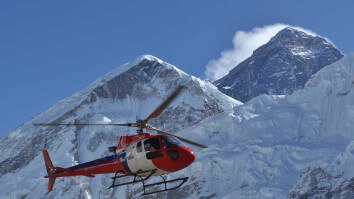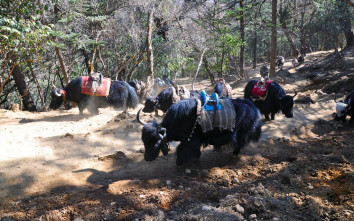A Beginner's Guide to High-Altitude Trekking in Nepal
21st Mar, 2024
- himalayaheart

A Beginner's Guide to High-Altitude Trekking in Nepal: Health Tips and Acclimatization Strategies
Table of Contents
Embarking on high-altitude treks in Nepal is an adventure that draws trekkers from around the world, offering them the opportunity to immerse themselves in the breathtaking landscapes of the Himalayas. However, trekking at high altitudes comes with its unique set of challenges, particularly related to health and acclimatization.
In this beginner's guide, we'll explore essential health tips and strategies to help you prepare for and thrive during your high-altitude trek in Nepal.
Understanding Altitude Sickness
Altitude sickness, also known as acute mountain sickness (AMS), is a concern for trekkers ascending above 2,500 meters. Symptoms include headache, nausea, dizziness, and fatigue. Learning the signs and understanding how to prevent and manage AMS is crucial for a safe trekking experience.
Acclimatization Strategies
The key to minimizing the risk of altitude sickness lies in proper acclimatization. This involves a gradual ascent, allowing your body time to adjust to the lower oxygen levels at higher elevations. Including rest days in your itinerary and following the “climb high, sleep low” principle can aid in acclimatization.
Hydration and Nutrition
Staying hydrated and maintaining a balanced diet are vital components of high-altitude trekking. Drinking plenty of water and consuming a diet rich in carbohydrates can help prevent altitude sickness and provide the energy needed for the strenuous activity.
Physical Preparation
Preparing your body for the demands of high-altitude trekking includes cardiovascular training, strength training, and altitude training if possible. Starting your fitness regimen several months before your trip can enhance your endurance and resilience on the trail.
Gear and Clothing
Equipping yourself with the right gear and clothing is essential to handle the variable weather conditions in the mountains. Layering is key, allowing you to adjust to changing temperatures, while quality hiking boots, a good sleeping bag, and a reliable backpack are must-haves for a comfortable trek.
Listen to Your Body
Lastly, paying attention to your body's signals and knowing when to rest or seek medical attention is crucial. Never underestimate the seriousness of altitude sickness and be prepared to descend if symptoms worsen.
Trekking in Nepal's high altitudes is an unforgettable experience, offering spectacular views and the chance to challenge yourself physically and mentally. By following these health tips and acclimatization strategies, you can ensure a safer and more enjoyable journey through the Himalayas.
Recent From Blog


























